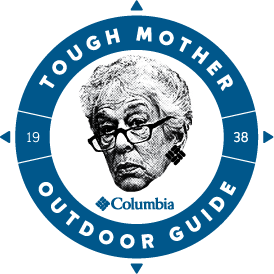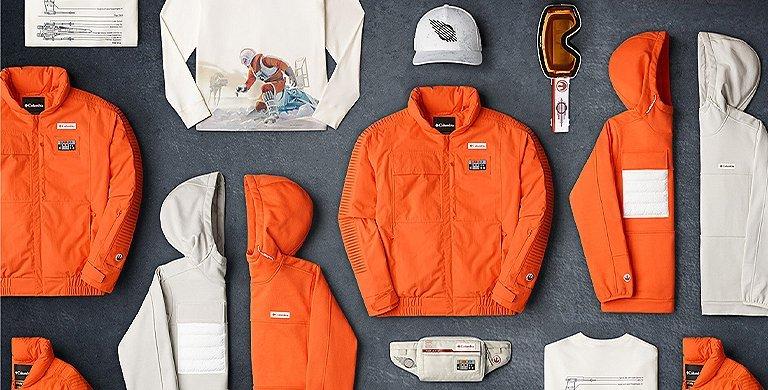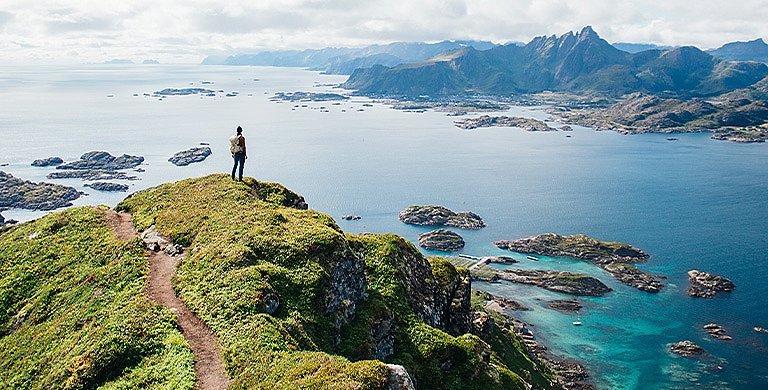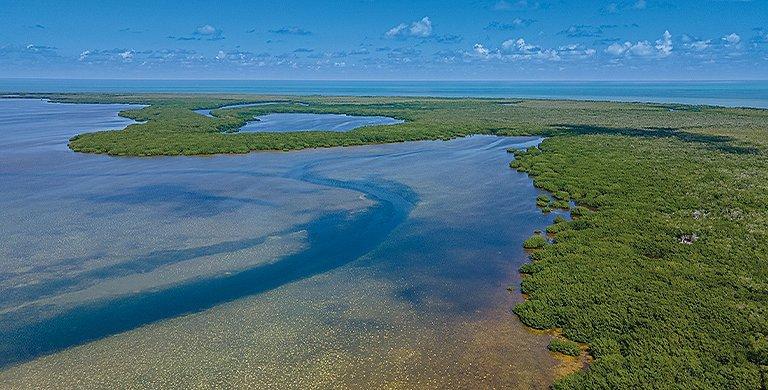CELEBRATION
Forging a Path: Increasing Diversity in the Outdoors
The Greening Youth Foundation promotes racial equality in the outdoor industry via education and job placement
BY RACHEL CAVANAUGH
Renee Maisonet didn’t have much exposure to the outdoors as a child. Aside from visiting family in rural Arkansas once or twice a year, she led a mostly urban existence.
However, that all changed one day as an adult when she was invited on a camping trip with a group of work friends to the Okefenokee National Wildlife Refuge. There, she discovered an incredible beauty and love for nature that changed her life.
“I started seeking out opportunities to be outside, volunteering and joining groups to camp with,” she recalls.
Today, Maisonet is not only an avid outdoorswoman, she’s the vice president of development for the Greening Youth Foundation (GYF), which connects underrepresented youth to the outdoors.
“After my own life-changing experience in nature, I developed a great desire to get other minorities outside, especially young people,” she says. “I strongly feel that if they are exposed at an early age and have a favorable experience, they will want to do it more frequently and will invite others to experience the joy of connecting with nature too.”
However, that all changed one day as an adult when she was invited on a camping trip with a group of work friends to the Okefenokee National Wildlife Refuge. There, she discovered an incredible beauty and love for nature that changed her life.
“I started seeking out opportunities to be outside, volunteering and joining groups to camp with,” she recalls.
Today, Maisonet is not only an avid outdoorswoman, she’s the vice president of development for the Greening Youth Foundation (GYF), which connects underrepresented youth to the outdoors.
“After my own life-changing experience in nature, I developed a great desire to get other minorities outside, especially young people,” she says. “I strongly feel that if they are exposed at an early age and have a favorable experience, they will want to do it more frequently and will invite others to experience the joy of connecting with nature too.”
Unlocking the outdoors
The group’s mission is to make outdoor spaces more accessible to young people, particularly minorities who often face challenges when attempting to participate in outdoor recreation.
According to the National Health Foundation, for example, nearly 70 percent of people who visit national parks and wildlife refuges are white, despite the fact that 40 percent of the U.S. population consists of people of color.
“It’s unfortunate that many monitories have a negative impression or standoff view of the outdoors and what it means to be outdoorsy,” Maisonet says. “There’s a lot of trauma and history that causes many people of color to be hesitant about exploring the great outdoors. It has not always and in many cases still isn’t a very inviting place for people of color.”
One reason that participation in outdoor recreation is lower among certain demographics is linked to geography. According to the Center for American Progress, for instance, people of color are three times as likely as white people to live in nature-deprived areas without access to outdoor or wilderness spaces.
Economics plays a role as well. It costs money to spend time outside and some lack the resources to drive to trailheads, pay for ski lift tickets, or buy new gear.
Safety concerns often contribute to lower participation numbers too, given that racially motivated violence often occurs in outdoor spaces. Cases like the killing of Ahmaud Arbery while jogging outside, for example, or the killing of 12-year-old Tamir Rice in a park, can create cultural apprehension .
According to the National Health Foundation, for example, nearly 70 percent of people who visit national parks and wildlife refuges are white, despite the fact that 40 percent of the U.S. population consists of people of color.
“It’s unfortunate that many monitories have a negative impression or standoff view of the outdoors and what it means to be outdoorsy,” Maisonet says. “There’s a lot of trauma and history that causes many people of color to be hesitant about exploring the great outdoors. It has not always and in many cases still isn’t a very inviting place for people of color.”
One reason that participation in outdoor recreation is lower among certain demographics is linked to geography. According to the Center for American Progress, for instance, people of color are three times as likely as white people to live in nature-deprived areas without access to outdoor or wilderness spaces.
Economics plays a role as well. It costs money to spend time outside and some lack the resources to drive to trailheads, pay for ski lift tickets, or buy new gear.
Safety concerns often contribute to lower participation numbers too, given that racially motivated violence often occurs in outdoor spaces. Cases like the killing of Ahmaud Arbery while jogging outside, for example, or the killing of 12-year-old Tamir Rice in a park, can create cultural apprehension .
Finding solutions
To help get kids excited about the outdoors and make them feel safe and welcome in those spaces, GYF offers campouts at urban parks where they learn how to pitch tents, prep hiking packs, and roast marshmallows. Group leaders teach concepts like “Leave No Trace ” and show them how to recycle. They also promote environmental stewardship and talk about health and wellness.
“My goal is to expose our youth to nature at a young age,” Maisonet says. “Our programs engage youth from marginalized communities and expose them to a robust natural science curriculum, as well as to outdoor recreation through outings that include hiking, paddling, and other immersive programming.
GYF also provides environmental education programs for the K–12 age range.
“We see firsthand how these experiences transform their lives. From their first experience camping at our Legacy Campout to summer camps and other youth programming, these young people become involved with many programs that extend out and to other community collaborators.”
“My goal is to expose our youth to nature at a young age,” Maisonet says. “Our programs engage youth from marginalized communities and expose them to a robust natural science curriculum, as well as to outdoor recreation through outings that include hiking, paddling, and other immersive programming.
GYF also provides environmental education programs for the K–12 age range.
“We see firsthand how these experiences transform their lives. From their first experience camping at our Legacy Campout to summer camps and other youth programming, these young people become involved with many programs that extend out and to other community collaborators.”
Working in the outdoors
The labor sector is another area where racial disparity can be seen in outdoor spaces. For example, just 7 percent of the National Park Service staff is African American while 79 percent is white. People of color make up only 12 to 15 percent of employees in the outdoor industry as a whole.
GYF is working to increase participation there too. Several years ago, the organization conducted a study asking students to describe some of the barriers they faced while breaking into the outdoor jobs market.
In addition to struggling to find jobs, many students were starting programs and not finishing them. GYF wanted to know why so many young people were entering these fields with excellent credentials but leaving shortly after.
Their reasons included things like “isolation” and “lack of representation”—the feeling that regardless of what they did, they were only going to get so far.
GYF is working to increase participation there too. Several years ago, the organization conducted a study asking students to describe some of the barriers they faced while breaking into the outdoor jobs market.
In addition to struggling to find jobs, many students were starting programs and not finishing them. GYF wanted to know why so many young people were entering these fields with excellent credentials but leaving shortly after.
Their reasons included things like “isolation” and “lack of representation”—the feeling that regardless of what they did, they were only going to get so far.
Columbia Sportswear has been the official outfitter for the Greening Youth Foundation Historically Black Colleges and Universities Internship (HBCUI) program, an opportunity for students to gain real-world, on-the-job experience while exploring careers in the outdoor space.
To help combat this, GYF provides job training programs and internship placements. The organization helps recruit qualified minority candidates for organizations and teaches cultural competency to their employers.
The Youth Conservation Corps, which is a branch of GYF, connects 700 to 800 young people from underrepresented communities with outdoor industry opportunities every year.
The organization also facilitates a live hiring event called the Bridge Project that connects dozens of outdoor sector employers with several hundred candidates. After the event, each employer is required to make hires from the candidates they’ve interviewed.
“The outdoor industry has historically lacked diversity within its hiring practices,” explains Shatiba Bradley, GYF’s chief operations officer. “[Our work has given] the outdoor industry the opportunity to provide an equitable experience to those marginalized communities that are often excluded from these opportunities.”
The Youth Conservation Corps, which is a branch of GYF, connects 700 to 800 young people from underrepresented communities with outdoor industry opportunities every year.
The organization also facilitates a live hiring event called the Bridge Project that connects dozens of outdoor sector employers with several hundred candidates. After the event, each employer is required to make hires from the candidates they’ve interviewed.
“The outdoor industry has historically lacked diversity within its hiring practices,” explains Shatiba Bradley, GYF’s chief operations officer. “[Our work has given] the outdoor industry the opportunity to provide an equitable experience to those marginalized communities that are often excluded from these opportunities.”
Maisonet notes that all of these programs, from job placement to campouts to environmental education, not only get young people excited about the outdoors—they foster ecological awareness too.
“I firmly believe that until a person learns to appreciate the beauty of the outdoors they won’t have the passion to conserve and preserve it,” Maisonet says. “By connecting young people to the joys and wonders of outdoor recreation, we are directly impacting their views on conservation.
“GYF is stewarding the next generation of environmental leaders.”
“I firmly believe that until a person learns to appreciate the beauty of the outdoors they won’t have the passion to conserve and preserve it,” Maisonet says. “By connecting young people to the joys and wonders of outdoor recreation, we are directly impacting their views on conservation.
“GYF is stewarding the next generation of environmental leaders.”
Greening Youth and Columbia Sportswear are committed to empowering everyone to get outside. To learn more visit our empowering people page.



